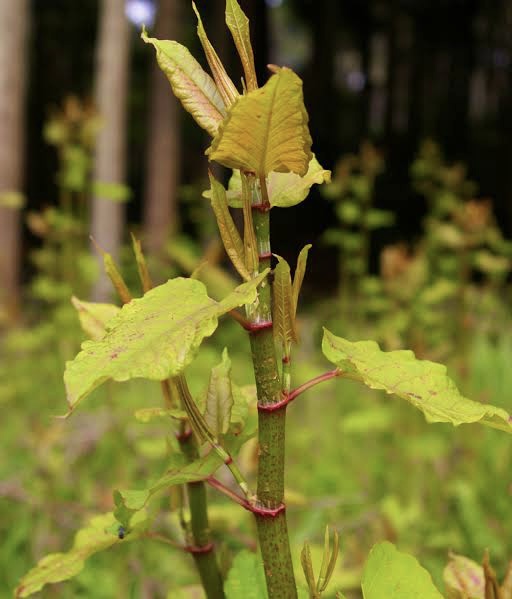
When I was a child, every spring the sukanpo would sprout up beside the Jizo statues that were enshrined throughout the town. When I picked and chewed on the skanpo, it would make my body shiver with its sour taste. After that, I would fold two or three of them and offer them to Jizo, and then go back home. Sukanpo is actually formally known as “itadori,” but I didn’t know that until recently. Itadori is a plant that has been familiar to Japanese people since ancient times, to the point that it was described as “tajinohana” (late blooming flower) in the Nihon Shoki (Chronicles of Japan) because it blooms from summer to autumn. It has been used as a folk remedy for stopping bleeding, and its young stems have been used for pickling and tempura. However, it was introduced to the UK and US for erosion control and gardening, and its strong vitality caused it to spread and gradually displace native species in the surrounding areas. It has become a notorious invasive species, capable of breaking through stone walls and concrete with its underground stems, pushing up train tracks, and destroying levees.
子供の頃、春になると、町中に祀られているお地蔵さんの傍に必ずすかんぽが芽を伸ばしていました。そのすかんぽを折ってしゃぶると酸っぱくて身震いしたものです。そのあと、すかんぽを二、三本折ってお地蔵さんにお供えし、拝んで家に帰ったものです。すかんぽは正式にはイタドリと言うそうですが、最近まで知りませんでした。イタドリは夏から秋にかけて花が咲くので、日本書紀では「多遅花(たじのはな)」と表現されているほど昔から馴染みのある植物です。昔から民間薬として、止血に利用されたり、若い茎を漬物やてんぷらに利用してきました。しかし、土壌の浸食防止や園芸用にイギリスとアメリカへ導入されたイタドリは、生命力が強過ぎて、次第に周辺地へ拡大繁殖し、在来種を追い払うまでになりました。さらには地下茎によって石垣やコンクリートを突き破ったり、電車のレールを押し上げ、堤防を破壊する程で、今では極めて厄介な外来種として悪名が高いそうです。
